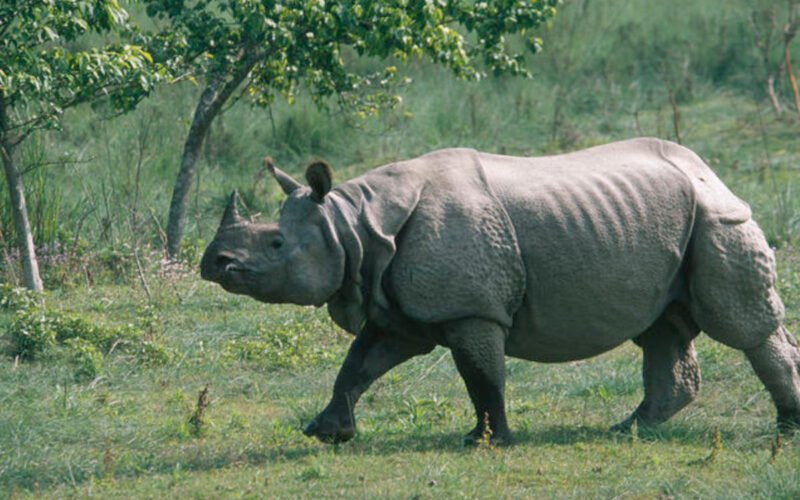Travellers exploring Assam’s Kaziranga National Park and Tiger Reserve are in for an exciting treat as two new mammalian species have recently been identified. This discovery adds to the rich biodiversity of the park, known as the primary habitat of the one-horned rhinoceros on Earth. The newfound species, namely the binturong (bearcat) and the small-clawed otter, were uncovered during a recent enumeration by officials, bringing the total mammalian count in the tiger reserve to an impressive 37. Both species are classified under Schedule I of the Wildlife Protection Act of 1972.
The Binturong
The elusive binturong, also known as the bearcat, is an arboreal mammal native to South and Southeast Asia. Its nocturnal and arboreal habits make it a challenging find, but officials managed to capture a photograph of it on January 10 during the fifth migratory bird count in the tiger reserve. The binturong’s distribution is exclusive to northeast India, making this sighting particularly noteworthy.
The Small-Clawed Otter
The discovery of the small-clawed otter came after a brief training program for officers and frontline staff, a collaborative effort between the Wildlife Institute of India and the Assam Forest Department. This otter species is mainly found in protected areas of West Bengal, Assam, Arunachal Pradesh, Karnataka, Tamil Nadu, and certain parts of Kerala in the Western Ghats region. Possessing partially webbed feet with short claws, these otters showcase enhanced hunting skills in aquatic environments, primarily sustaining themselves on a diet of fish, crustaceans, and mollusks.
Kaziranga National Park’s Diverse Mammalian Population
Kaziranga National Park and Tiger Reserve boast a diverse range of mammalian inhabitants. Alongside the newly discovered species, the park is home to the Indian wild boar, Indian gaur, sambar, hoolock or white-browed gibbon, Gangetic dolphin, capped langur or leaf monkey, sloth bear, leopard, and the jackal. This recent enumeration brings the total mammalian count to 37, further highlighting the park’s significance as a haven for wildlife conservation.
About Kaziranga National Park
Declared a UNESCO World Heritage Site in 1985, Kaziranga National Park features a remarkable mammal roster, often referred to as the Big Five. This includes the great Indian one-horned rhinoceros, Indian elephant, Bengal tiger, wild water buffalo, and the eastern swamp deer. The park continues to play a crucial role in preserving these iconic species and promoting biodiversity conservation in the region.
The recent discovery of the binturong and small-clawed otter in Kaziranga National Park adds a new dimension to the park’s already diverse wildlife. As travellers explore this UNESCO World Heritage Site, they can now witness firsthand the unique and rare mammalian species that contribute to the ecological richness of this remarkable habitat.
